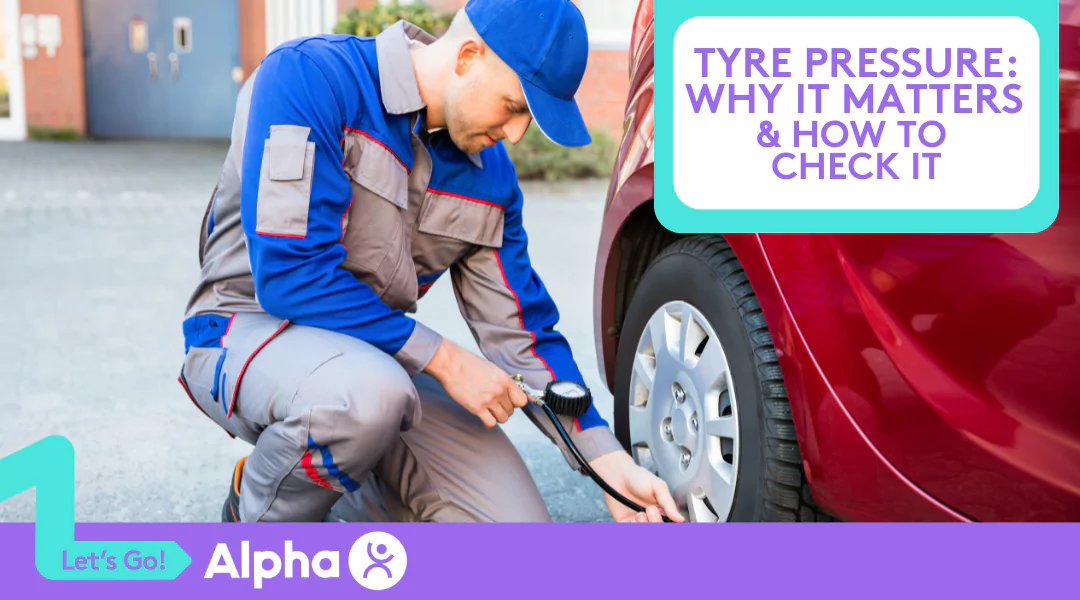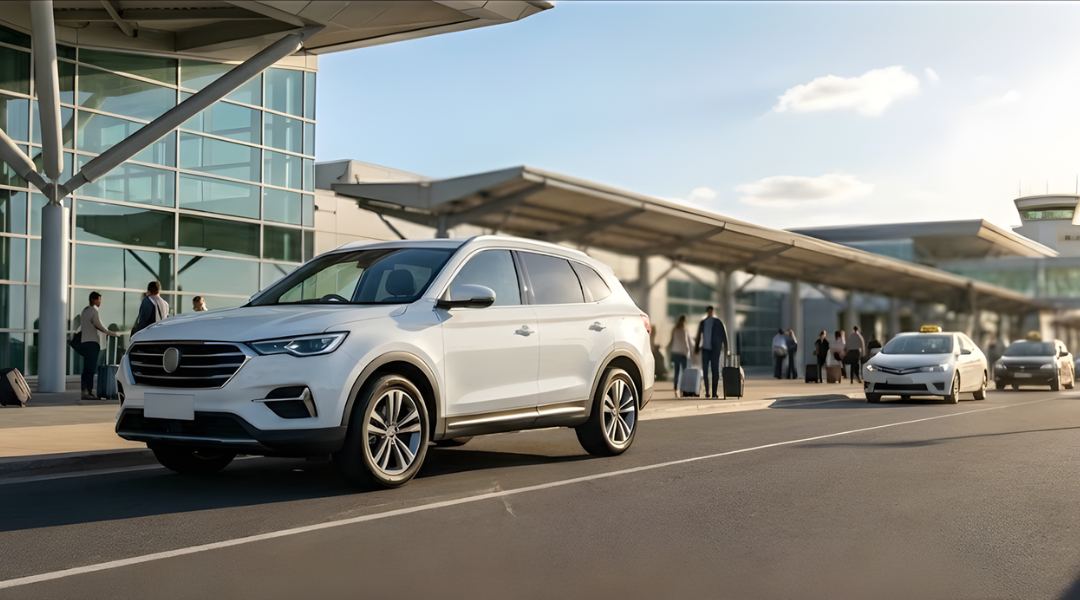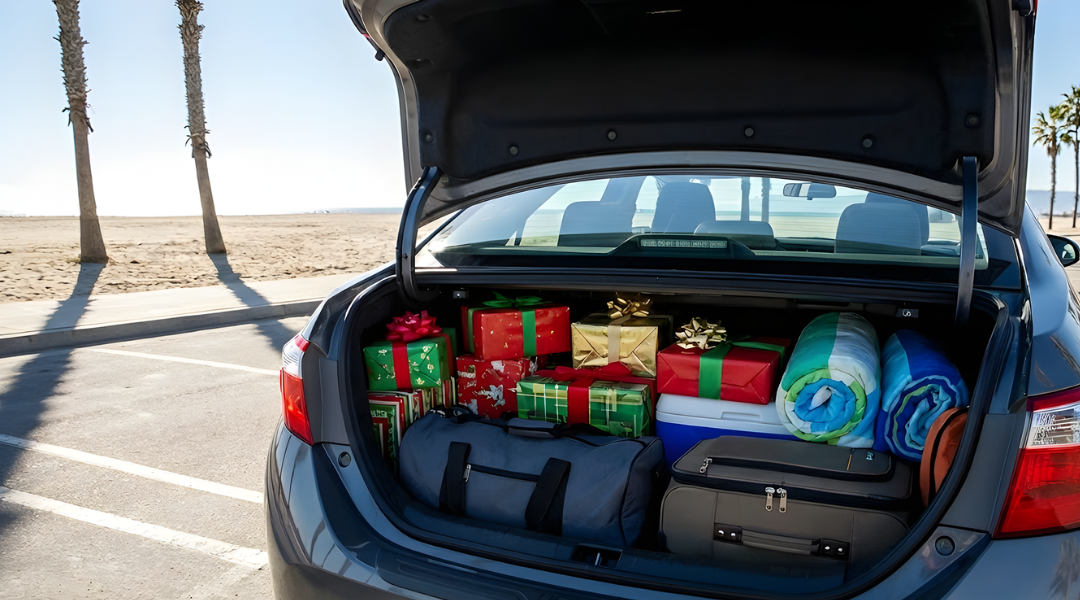It’s easy to overlook, but one of the simplest things you can do for your car’s performance, safety, and your wallet is to check your tyre pressure regularly. Picture this: you’re cruising along an Australian highway, sun shining, music on. You might be in your own vehicle, or perhaps enjoying the freedom of a car hire. You might not be thinking about your tyres, but their unsung hero, correct tyre pressure, is silently working to keep you safe, save you money, and ensure a smooth ride.
Correct tyre pressure is absolutely fundamental to your vehicle’s safety, significantly impacts your fuel efficiency, extends the lifespan of your tyres, and is crucial for optimal handling and braking performance. Yet, despite its critical importance, checking tyre pressure is one of the most commonly neglected maintenance tasks for many Australian drivers. This oversight can lead to serious consequences, both on the road and for your hip pocket. This post will delve into why tyre pressure matters, explore the various risks associated with incorrect inflation, and provide a straightforward, step-by-step guide on how and when Australian drivers can easily check and adjust their tyre pressure for a safer and more economical drive.
Why Correct Tyre Pressure Matters
- Safety First:
- Optimal Grip & Handling: Explain how correct pressure ensures the tyre’s full tread contacts the road, providing maximum grip for braking, cornering, and stability. This is crucial whether you’re navigating city streets or tackling winding country roads.
- Reduced Risk of Blowouts: Under-inflated tyres flex excessively, which builds up dangerous levels of heat. This significantly increases the risk of a sudden and dangerous blowout, especially on long, hot Australian drives, or at highway speeds.
- Improved Braking Distance: Properly inflated tyres allow for shorter and more effective braking distances, which can be the difference between avoiding an accident and being involved in one.
- Crucial for Car Hire: When you pick up a car hire, checking the tyre pressure should be one of your first steps. You can’t assume a rental company has recently checked it, and your safety depends on it.
- Fuel Efficiency:
- Less Rolling Resistance: Explain that under-inflated tyres have more surface area touching the road and create more friction. This increases “rolling resistance,” forcing the engine to work harder to maintain speed.
- Direct Impact on Your Wallet: Quantify (e.g., “can reduce fuel economy by up to 3% for every 10 PSI under-inflation”) or provide a general statement about significant fuel savings over time. Over a year, even small savings per tank add up considerably, especially with current fuel prices.
- Tyre Longevity:
- Even Wear: Correct pressure ensures the tyre wears evenly across its entire tread surface, distributing the load correctly.
- Incorrect Wear Patterns:
- Under-inflation: Causes excessive friction and wear on the outer edges (shoulders) of the tyre, leading to premature replacement.
- Over-inflation: Causes the centre of the tyre to bulge slightly, leading to excessive wear in the middle of the tread.
- Extending Tyre Life: Explain that maintaining even wear maximises the lifespan of your tyres, delaying costly replacements and saving you money on new rubber.
- Driving Performance & Comfort:
- Smoother Ride: Correct pressure allows the tyre’s internal structure to flex and absorb road imperfections as designed, contributing to a more comfortable and less jarring ride.
- Responsive Steering: Improves steering responsiveness and overall vehicle control, making your car feel more stable and predictable.
- Reduced Tyre Noise: Properly inflated tyres can help minimise road noise transferred into the cabin, leading to a quieter and more pleasant driving experience.
The Risks of Incorrect Tyre Pressure
Whether it’s your personal vehicle or a car hire, the dangers of incorrect tyre pressure are universal and can lead to serious safety and financial repercussions.
- Under-inflation Risks:
- Increased Heat Buildup: This is the primary and most dangerous consequence. Under-inflated tyres flex more, generating significant internal friction and heat. This excessive heat can weaken the tyre’s structure, leading to tread separation or a dangerous blowout, especially at highway speeds or in hot Australian conditions.
- Reduced Fuel Economy: As explained previously, greater rolling resistance from a larger contact patch burns more fuel, hitting your wallet directly.
- Poor Handling & Braking: A compromised contact patch reduces the tyre’s grip on the road, making the vehicle feel sluggish in turns, less stable at speed, and significantly increasing braking distances, potentially leading to accidents.
- Faster, Uneven Wear: Specifically, the outer shoulders of the tyre will bear the brunt of the wear, leading to accelerated and uneven degradation and necessitating earlier, costly tyre replacement.
- Increased Chance of Punctures/Damage: Softer tyres are more susceptible to damage from impacts with potholes, kerbs, and road debris, as they have less structural integrity to absorb shocks.
- Over-inflation Risks:
- Reduced Tyre Contact Patch: When a tyre is over-inflated, only the very centre of the tread makes firm contact with the road. This significantly reduces the overall grip and stability of the vehicle.
- Harsher Ride: Tyres lose their ability to absorb bumps and road imperfections effectively when over-inflated. This results in a much stiffer, less comfortable, and jarring ride for occupants.
- Reduced Braking Effectiveness: With less rubber making contact with the road, the braking force that can be applied is reduced, increasing braking distances and compromising safety.
- Faster, Uneven Wear: Specifically, accelerated wear occurs in the centre of the tyre tread, leading to premature replacement despite the sides looking relatively new.
- Increased Susceptibility to Impact Damage: Over-inflated tyres are stiffer and have less “give” when encountering impacts. This makes them more prone to damage like bulges, punctures, or even sudden blowouts from hitting a pothole or kerb.
- Less Road Holding in Wet Conditions: The reduced and often less consistent contact patch can mean significantly less grip on wet roads, increasing the risk of aquaplaning or losing control.
How to Find Your Car’s Correct Tyre Pressure
Knowing the correct tyre pressure for your vehicle is absolutely crucial, and it’s not a one-size-fits-all number. Many Australian drivers inadvertently make the mistake of looking at the tyre itself for this information, but that’s precisely not where you’ll find the right operating pressure for your specific car.
- Don’t Trust the Tyre Sidewall:
- It’s a very common misconception that the pressure stamped on the tyre sidewall (e.g., “Max. Press. 300 kPa (44 PSI) Cold”) is the recommended operating pressure for your vehicle.
- Why it’s Incorrect: This figure actually represents the maximum pressure the tyre can safely hold when cold, determined by the tyre manufacturer for that specific tyre model’s structural integrity. It is not the ideal pressure for your car. Vehicle manufacturers carefully specify tyre pressures based on a multitude of factors, including the car’s weight distribution, suspension setup, intended handling characteristics, and expected passenger/load capacities. Inflating your tyres to this maximum sidewall pressure will almost certainly lead to over-inflation, bringing with it all the associated risks discussed earlier.
- Check Your Car’s Placard:
- The Definitive Source: The absolute, definitive source for your car’s recommended tyre pressure is a sticker or placard that the vehicle manufacturer has affixed to the car itself. This information is tailored precisely to your specific make, model, and year.
- Common Locations: You’ll typically find this crucial placard in one of a few key places:
- Driver’s Side Door Jamb: Open the driver’s door and look on the frame or pillar where the door latches. This is the most common spot.
- Inside the Fuel Filler Flap: Sometimes, the sticker is located on the inside of the fuel filler door.
- Owner’s Manual: As a last resort, if you can’t find the physical sticker, your car’s owner’s manual will contain this vital information, usually in a section on tyres or specifications.
- What it Shows: This placard will clearly state the recommended tyre pressures for both your front and rear tyres. Importantly, it often provides different recommendations for:
- Normal Load: For typical daily driving with just a driver or light passenger load.
- Full Load/Highway Driving: For when your vehicle is carrying more passengers, heavy luggage, or for sustained high-speed driving on highways (like long Australian road trips). Using the higher pressure for full loads is important for safety and handling.
- It will also specify the correct original tyre size for your vehicle.
- Units: The pressure will almost always be listed in either PSI (pounds per square inch) or kPa (kilopascals), which are the standard units used across Australia. Most modern gauges can read both.
How to Check Your Tyre Pressure (Step-by-Step Guide)
Checking your tyre pressure is a quick and straightforward process that requires minimal tools and can be done in minutes. Making it a regular habit can save you a lot of hassle, improve safety, and save you money down the line.
- Tools Needed:
- Tyre Pressure Gauge:
- Digital Gauges: Offer precise, easy-to-read numbers and are highly recommended for accuracy.
- Dial Gauges: Feature a circular dial and needle, providing clear readings.
- Pencil/Stick Gauges: The most basic and affordable, where a stick slides out to indicate pressure. While cheap, they can be less accurate over time.
- Air Compressor: To add air if your tyres are under-inflated. You can easily find air compressors at most petrol/service stations across Australia (often free to use, or a small coin payment). Alternatively, you might have a portable 12V air compressor for home or roadside use.
- Tyre Pressure Gauge:
- When to Check (Cold Tyres):
- The Golden Rule: This is absolutely critical for obtaining an accurate reading. Always check your tyre pressure when the tyres are “cold.”
- What “Cold” Means: This signifies that the car should have been parked for at least three hours, or driven for a very short distance – ideally less than two to three kilometres – to reach the checking location (like a petrol station).
- Why Heat Matters: As tyres roll, the friction generated between the tyre and the road, as well as internal flexing, causes the air inside to heat up. This heated air expands, causing the pressure reading to increase artificially. Checking hot tyres will give you an artificially high reading, leading you to inadvertently under-inflate them when you adjust to the “cold” recommended pressure.
- Step-by-Step Process:
- Locate Valve Stem: On each tyre, locate the small, usually black or silver, valve stem protruding from the wheel. It will be covered by a small plastic or metal cap. Unscrew and remove this valve cap, placing it somewhere safe where it won’t roll away (e.g., your pocket or a cup holder).
- Attach Gauge: Firmly and squarely press the open end of your tyre pressure gauge straight onto the valve stem. You’ll hear a brief hiss of air escaping – this is perfectly normal and indicates you’ve created a good, tight seal. Hold it firmly in place until the hissing stops and the gauge registers a stable reading.
- Read Pressure: Observe the reading on your gauge. If using a stick gauge, the stick will pop out to indicate the pressure. For a digital gauge, the number will display instantly.
- Compare to Recommended: Compare the reading you just obtained from your gauge to the recommended “cold” tyre pressure found on your car’s placard (on the door jamb or inside the fuel flap). Remember the normal load vs. full load/highway distinctions.
- Add/Release Air (as needed):
- If Too Low: If the reading is below the recommended pressure, connect the air compressor nozzle to the tyre’s valve stem. Add air in short bursts (typically 5-10 seconds at a time). After each burst, remove the compressor nozzle and re-check the pressure with your gauge until you reach the correct level.
- If Too High: If the reading is above the recommended pressure, use the back of your tyre gauge (or a small, pointed object like a fingernail or the tip of a pen) to gently press the small pin located in the very centre of the valve stem. You’ll hear air escaping. Release air in small bursts and frequently re-check the pressure with your gauge until the desired level is achieved.
- Replace Valve Cap: Once the correct pressure is set for that tyre, screw the valve cap back onto the valve stem securely. This cap is important not just for keeping dirt out, but also for preventing moisture ingress and protecting the valve stem from corrosion or potential slow leaks.
- Repeat for All Tyres: It’s vital to repeat this entire process for all four main tyres on your vehicle. And, importantly, don’t forget your spare tyre (if your car is equipped with one). Spare tyres often have different recommended pressures (sometimes higher), so check its specific instructions on the placard or in your owner’s manual to ensure it’s also properly inflated and ready for use. This applies equally when you’re driving a car hire; check all tyres you’ll be using.
When and How Often to Check Your Tyre Pressure
Regular checks are key to maximising the benefits of correct tyre pressure, ensuring ongoing safety, optimal performance, and saving you money.
- Frequency:
- At Least Once a Month: Make it a non-negotiable habit to check your tyre pressure at least once a month. This consistency helps you catch slow leaks or gradual pressure loss before it becomes a problem.
- Before Long Road Trips: Always perform a pressure check before heading out on any significant journey, especially long-distance drives across the vast Australian landscape, where sustained high speeds and heavy loads can put extra strain on tyres. This is equally crucial if you’re taking a car hire on an extended trip; assume nothing and check.
- Factors That Influence Pressure:
- Temperature Changes: Tyre pressure is directly affected by ambient temperature. As a general rule, tyre pressure drops in colder weather (approximately 1-2 PSI for every 10°C drop in temperature) and increases in hotter weather. You may need to adjust your tyre pressures with seasonal changes, especially when moving between distinct seasons (e.g., winter to summer).
- Driving Habits: Aggressive driving, high speeds, and carrying heavy loads generate more heat in the tyres, which can temporarily increase pressure. While you check cold pressure, be aware of how these factors influence it during your drive.
- Punctures or Slow Leaks: Even a tiny nail or a faulty valve stem can cause a slow, insidious leak that might not be immediately obvious. Regular pressure checks are your best defence against these gradual air losses, allowing you to address them before they lead to significant under-inflation or a flat.
- Before Long Trips: Always conduct a thorough tyre pressure check before embarking on a significant journey, particularly if you’re loading your vehicle with a full complement of passengers or substantial luggage. The increased weight necessitates adherence to the “full load” recommended pressures, ensuring stability and preventing tyre overheating at sustained highway speeds. This diligence is paramount for both your own vehicle and any car hire you might be using for extended travel.
Conclusion
Maintaining correct tyre pressure is a simple, free, yet incredibly effective way for any Australian driver to significantly enhance their safety on the roads, save real money on fuel and tyre replacements, and dramatically improve their overall driving experience. It’s a fundamental aspect of car care that offers substantial benefits for minimal effort. Don’t let this vital task go overlooked. Take control of this easy maintenance step by making regular checks a non-negotiable part of your routine. Don’t let incorrect tyre pressure deflate your driving experience or your wallet. A few minutes each month can truly make all the difference on Australia’s diverse roads.
Alpha Car Hire: Convenient Airport Pick-Up
When planning your next trip, whether for business or leisure, the convenience of your car hire experience can set the tone. Alpha Car Hire understands the importance of a smooth start to your journey, which is why we offer seamless and convenient airport pick-up services across Australia. Skip the queues and the hassle, and get straight into your reliable rental vehicle the moment you land. Book your next car hire with Alpha Car Hire today and enjoy easy airport pick-up for a stress-free start to your adventure!




